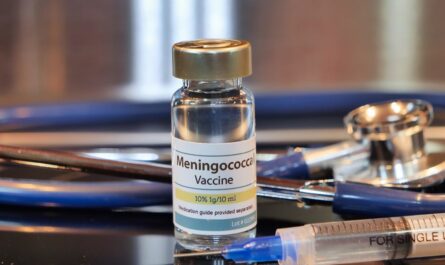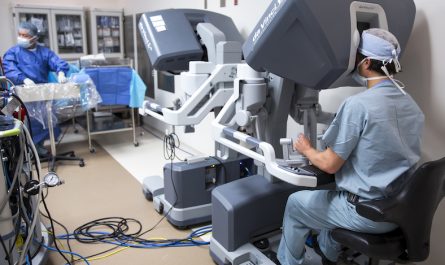
Testosterone is an androgen hormone that plays an important role in male sexual and reproductive functions. A natural decline in testosterone levels is common as men age past 30. Sometimes, this decline can be more significant and lead to medical issues known as hypogonadism or low testosterone. In such cases, testosterone replacement therapy (TRT) is often prescribed to bring testosterone levels back to normal ranges and alleviate symptoms. This article examines what TRT entails, who can benefit from it, potential risks and side effects.
What is Testosterone Replacement Therapy?
Testosterone replacement therapy aims to supplement testosterone levels in men whose bodies do not produce enough of the hormone naturally. It involves the use of testosterone formulations like gels, patches, injections or pills that introduce pharmaceutical-grade testosterone into the body.
The goal of TRT is to restore total and/or free testosterone concentrations to normal mid-range levels for a man’s age. This helps relieve symptoms associated with low testosterone like low energy, reduced libido, erectile dysfunction, decreased muscle mass and increased body fat levels.
TRT is usually an ongoing treatment that must be taken indefinitely or until the underlying issue causing low testosterone is resolved. The dosage and formulation are tailored to each individual’s needs based on lab test results and symptom improvement. Medical supervision is necessary during the treatment duration.
Potential Benefits of Testosterone Replacement Therapy
Some key potential benefits of taking TRT include:
– Increased energy levels and sense of well-being
– Enhanced mood and reduced symptoms of depression
– Improved libido and sexual function
– Increased muscle mass and strength
– Decreased body fat levels
– Improved bone mineral density and reduced fracture risk
– Potential reduction in cardiovascular disease risk factors
Who Can Benefit from Testosterone Therapy?
Not all men experiencing low testosterone symptoms need TRT. It is typically prescribed for:
– Hypogonadism: A medical condition where the body does not produce enough natural testosterone due to testicular failure or pituitary gland issues. Primary and secondary hypogonadism are common causes.
– Symptomatic decline: When aging-related testosterone decline leads to clinically relevant symptoms negatively impacting quality of life. Total testosterone levels at or below 300 ng/dL are often used as diagnostic criteria.
– Those with other medical issues like diabetes, HIV/AIDS or sleep disorders where restoring testosterone may provide additional benefits.
Side Effects and Risks to Consider
While TRT can significantly improve well-being when prescribed properly, it also carries certain risks:
– Prostate issues: High testosterone may potentially fuel prostate cancer growth or worsen existing BPH symptoms over time. Regular monitoring is essential.
– Heart health: TRT is linked to slight rises in hematocrit levels and small increases in cardiovascular risk. These risks are usually outweighed by other benefits in healthy individuals.
– Polycythemia: Abnormally elevated red blood cell counts which thicken the blood, raising clotting risk if untreated.
– Virilizing effects: Symptoms like acne, oily skin, body/facial hair growth or pattern baldness in genetically predisposed individuals.
– Fertility issues: High testosterone inhibits sperm production and natural testosterone levels. Fertility usually returns once treatment ends but preservation should be discussed prior to therapy.
– Misuse potential: Illicit use of pharmaceutical-grade testosterone for performance and image enhancement poses serious health hazards.
Appropriate ongoing supervision, individualized dosing, annual checkups and addressing modifiable risk factors allow TRT to be safely followed long-term for most. However, it’s not suitable for everyone and requires evaluation on a case-by-case basis.
Alternative Treatments
While TRT is often very effective in alleviating low testosterone symptoms, some men may choose alternative interventions initially or as an adjunct:
– Lifestyle modifications like diet, exercise, weight control and stress management help maximize natural testosterone production and are recommended regardless of therapy route.
– Herbal supplements containing D-aspartic acid, tribulus terrestris, fenugreek and other ergogenic compounds are speculated to modestly boost testosterone levels for some.
– Closely monitored intermittent therapy that administers testosterone cyclically to prevent continuous hypogonadal symptoms rather than mimic natural levels.
– Selective estrogen receptor modulators (SERMs) block estrogen’s negative impact on the HPTA axis and may benefit some with milder declines.
Conclusion
In summary, testosterone replacement therapy is a scientifically proven treatment option that can significantly improve quality of life for many men experiencing clinically low testosterone due to aging or other medical conditions. While it requires long-term commitment and periodic health screenings, prescribed judiciously based on symptoms and guided by monitoring, TRT poses manageable risks for most cases when other options are insufficient. It’s important for any candidate to fully discuss risks, alternative options and lifestyle strategies with their doctor beforehand.
*Note:
- Source: Coherent Market Insights, Public sources, Desk research
- We have leveraged AI tools to mine information and compile it


